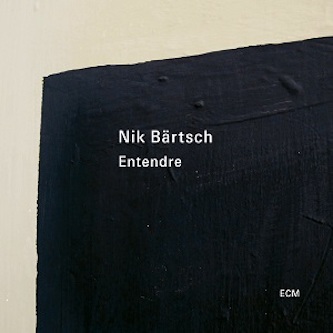Jazz Album Review: Nik Bärtsch’s “Entendre” — Zen Funk
By Michael Ullman
To my ears, the pieces in Entendre are fascinating, if not particularly funky.
Entendre, Nik Bärtsch (ECM)
 I’ve heard the music of Swiss pianist Nik Bärtsch described, equally aptly, as zen funk and ritual groove music: the latter description derives from his quintet recordings under that title, a series that began in 2000 with Ritual Groove Music 1: Nik Bärtsch’s Mobile. As on his new solo piano album, Entendre, the titles on what turned out to be the groove music series were numbered and labeled “Modul.” Those early recordings on the Swiss Tonus Music label seem not to be readily available. (Nor are the ensuing albums with a group imposingly called the Tonus-Music Labor Research Result.) In 2005, though, Bärtsch made his first of a series of albums for ECM. These have included Continuum (2015) for nine pieces and Awase (2017) for a quartet. “Awase,” he tells us, means moving together.
I’ve heard the music of Swiss pianist Nik Bärtsch described, equally aptly, as zen funk and ritual groove music: the latter description derives from his quintet recordings under that title, a series that began in 2000 with Ritual Groove Music 1: Nik Bärtsch’s Mobile. As on his new solo piano album, Entendre, the titles on what turned out to be the groove music series were numbered and labeled “Modul.” Those early recordings on the Swiss Tonus Music label seem not to be readily available. (Nor are the ensuing albums with a group imposingly called the Tonus-Music Labor Research Result.) In 2005, though, Bärtsch made his first of a series of albums for ECM. These have included Continuum (2015) for nine pieces and Awase (2017) for a quartet. “Awase,” he tells us, means moving together.
For Entendre, Bärtsch chose to record on solo piano, prepared and otherwise, five Moduls and a bonus piece entitled “Déjà-vu, Vienna.” I’d heard “Modul 5” before on Continuum. The initial statement generates the heart of the composition: a rapidly repeated, rhythmically complex iteration of a single note. It’s both insistently repetitive and elusive. On Entendre, the initial pitch is lower and the pace slower. One hears the variations in the rhythm and also in tone because the initially tubby sound of the vibrating string seems to force itself forward, becoming more percussive as it picks up overtones. A little before two minutes into “Modul 5” the piece abruptly stops with a twang. It starts up again more or less as at the beginning, except this time the initial string sound, a bit like a sitar, is joined by electronic emissions and a kind of doubling. Gradually, the electronic effects dominate the proceedings until underneath it all a piano note emerges and is repeated.
To my ears, the pieces in Entendre are fascinating, if not particularly funky. The opener, “Modul 58,” also begins with a single repeated note, but this time peacefully stated chords poke up out of the ether. Then the piano suddenly takes up the rhythm and there follows what appears to be an improvised solo over the rhythmic background. “Modul 26” begins high in the piano with a little circular phrase: the tune continues to stay in the same range as the pianist plays with a sweetly articulated melody. Bärtsch seems to be setting up a dialogue between the treble-and mid-range of his instrument in “Modul 13,” which features an interplay between normal piano sounds and a single note that’s both plucked and amplified. I am not sure why “Déjà-vu, Vienna” alone receives its own title. What’s striking here — a little phrase in the bass pauses for a single note in response — is a paradoxical appeal that is both meditative and conversational. For this listener, that quality is symptomatic of the album: there was enough diversity here — between and within pieces — to charm.
Michael Ullman studied classical clarinet and was educated at Harvard, the University of Chicago, and the U. of Michigan, from which he received a PhD in English. The author or co-author of two books on jazz, he has written on jazz and classical music for the Atlantic Monthly, New Republic, High Fidelity, Stereophile, Boston Phoenix, Boston Globe, and other venues. His articles on Dickens, Joyce, Kipling, and others have appeared in academic journals. For over 20 years, he has written a bi-monthly jazz column for Fanfare Magazine, for which he also reviews classical music. At Tufts University, he teaches mostly modernist writers in the English Department and jazz and blues history in the Music Department. He plays piano badly.

Nice! True music lovers will appreciate the surreal and cinematic background score it set. Intriguing piece which draws you towards it.